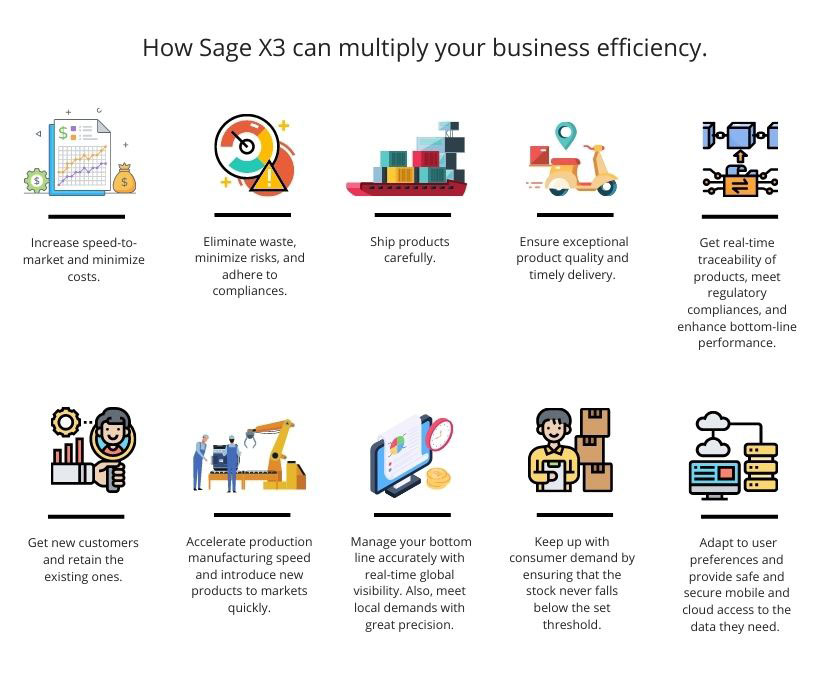Extended planning and Analysis (xP&A) is a new rising trend among companies. Planning is a crucial component of an organisation. A well-organized plan can help businesses conduct their operations in order and reach greater heights. Digital transformation is essential for all organizations. It allows businesses to stay competitive. Plus, it helps companies to be more productive and efficient.
A well-established organization develops best practices for their finance through financial planning and analysis (FP&A) for the best future outcomes. The best practices are decided by drawing insights from business forecasts. But the best practices also sometimes fail. This central point of focus is only finance, so it has its drawbacks.
Businesses now have realized that creating a financial plan alone is not enough. Integration of financial and operational planning is essential to make a list of flawless business practices. So this planning is given the term extended planning and analysis (xP&A).
What is Extended Planning and Analysis (xP&A)?
Finance is a significant part of the business. But taking an insightful decision for finance alone won’t solve the company’s issues. So companies devised a plan to further stretch FP&A, which gave birth to xP&A(Extended planning and analysis).
Extended planning and analysis (xP&A) is an extension of financial planning and analysis(FP&A). The point of this concept is to take decisions for the entire organization. Various business operations like human resources, sales, marketing, supply chain, operations, IT, research and development creates an operational plan in a shared FP&A platform to integrate data models and analytical methodologies.
Executing the xP&A strategy fills the gap between finance and operations. By bridging finance and operations, it will be easy to create strategies beneficial for the entire organization.
What is the difference between FP&A and xP&A?
FP&A and xP&A are different from each other. FP&A focuses on financial budgeting, planning, forecasting and reporting. These help financial executives make strategic decisions impacting a company’s financial operations. The drawback is that FP&A only gives a financial perspective leaving out other core business areas.
xP&A is the extension of FP&A. Apart from FP&A, even other departments in the business are making planned decisions. Take, for example, the marketing team plan for campaigns in different channels, the sales team plan for forecasts and targets, the human resources plan for headcount and remuneration and the production team plans for scheduling, planned resources and capacity. So each of these business areas makes isolated plans without thinking about the impact it can have on the business.
For example, if the marketing team’s campaigns reach the target customers, the sales team will acquire many leads, and then the production has to come into action immediately to match the demand. The point is that all these operations are interconnected. It cannot take isolated decisions and implement them. It never works out if all the business areas are not integrated together.
xP&A breaks down these barriers by offering a platform for all business operations to make a unified decision. Transparency is a criterion for planning strategies for the company’s better future. So this is precisely what an xP&A does.
Also read: What is MRP (Material Requirements Planning)? | MRP vs ERP
Why should a company adopt the xP&A approach?
Planning is a tedious task. Once a plan is made, it has to be instantly implemented as the trends in the business keep evolving. So each time, the teams have to come up with different plans.
Manually extracting and integrating all the data from the spreadsheet and other sources is time-consuming and tedious. The management will be confused when the reports lack clarity, obstructing them from making the right decisions for the company.
FP&A is a conventional business practice that cannot support modern business approaches. xP&A is a current business practice. It can unify all the business operations and finance to make a clear-cut decision. It can apply all the standard FP&A principles to all the other business operations.
Companies following the xP&A approach often perform well. A robust and integrated planning system has to be executed in the company for better business efficiency.
Benefits of Extended Planning Analysis xP&A
Businesses are evolving, and new trends are emerging in the market. One such trend is xP&A. Note that FP&A is the robust foundation to make financial decisions. xP&A is the extension of FP&A. It standardizes, automates and integrates the planning process for all business areas. Let’s look at the benefits of XP&A for businesses.
Transparency in operational planning
A single view or report of financial and operational activity is time-consuming and avoids confusion. Plus, it reduces manual, labour-intensive, tedious tasks.
Identification of new opportunities
If the reports and forecasts are clear, it will open new opportunities for the decision-makers to plan and form the right strategies for the company’s best outcomes.
Improved business efficiency
When well-planned strategic goals are executed into the operational activities of the business, it increases business efficiency and productivity.
Collaboration and its impact
An organization consists of many core business operations. Each business area is dependent on the other. No business department can stand alone and perform functions. So when each department’s activities and planning are integrated into a single system, it will be easier to make robust strategical decisions.
Power of business partnering
The senior management makes final decisions beneficial for the company. So when they are provided with the right supporting tools, it will be easier for them to understand the flaws in the business and make the right decisions.
xP&A is a necessity for the company’s planning process. It is a modern planning approach to finding new opportunities to improve business efficiency.
Power of modern technologies
Modern technologies like AI(artificial intelligence) and predictive and prescriptive analysis give accurate forecasts of all the business operations helping the planning team to make insightful strategies to drive business towards success.
Origins of xP&A
xP&A is the extension of FP&A. Financial planning is the most prominent in an organization. Integrating it with other operational planning provides clarity and will boost the value chain of the entire organization.
Gartner called xP&A an emerging trend and coined the term. Large organizations already implement xP&A to achieve the best outcomes efficiently. A survey by Gartner says that about 70% of the FP&A projects will be changed to xP&A by 2024. FP&A is a conventional approach unadaptable to modern business trends as it is limited to making only financial decisions.
xP&A to the Cloud
Cloud xP&A is still a developing technology. It operates on the cloud and is managed by the ERP vendor. xP&A helps make financial and operational decisions with the data accessible in the cloud. This planning approach must collaborate with the business operations to automatically make strategies for the business’s future.
Wrapping up, financial planning is essential for the growth of a business. xP&A helps you to identify the weak points in the company overall and helps to make impactful decisions resulting in the development of the industry. xP&A is the future of the planning process. It will soon be implemented for all businesses to stay ahead of the competition. So it is best if the companies begin executing this approach to their business now.
Also read: What is S&OP (Sales and operations planning)?
Sage X3
Sage X3 ERP system is the leading business management solution for all businesses. It provides business efficiency and helps companies to achieve their goals efficiently. It simplifies the processes of the core business functions like distribution, supply chain management, inventory, financial and accounting, project management, sales and marketing.
Sage X3 ERP system stands ahead with excellent features built to help businesses perform operations seamlessly. Companies can customize the software to suit their business requirements. This intelligent business management solution is agile, flexible, resilient and faster. With the Sage X3 ERP system, it is easier to accelerate your business growth quickly.
Take the right decision for your business by choosing Sage X3.
Connect with us and schedule for demo.
To know more, visit our website: www.sagesoftware.co.in
Sage Software Solutions is a leading IT company with an array of advanced ERP Software solutions. Our proprietary products — Sage X3 and Sage 300 will help you cut your operational expenses, improve business productivity, increase operational efficiency, forge robust customer relationships, and strengthen association with vendors, suppliers, and distributors. So, if you are looking to reinforce your business fundamentals and emerge as an industry leader, then please schedule a call with one of our sales representatives.





